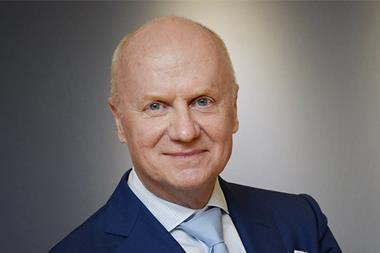Some $400bn (€297bn) dollars invested in stable value funds are at stake, waiting for the US department of labour to make a decision about what constitues a qualified default investment alternative (QDIA) for 401(k) plans. The proposed definition does not include stable value funds, because they are not considered appropriate for a long-term investment strategy. But is the pension and investment fund industry more concerned about fees and potential profits than with employees' retirement security? You might think so talking with Gina Mitchell, president of the Stable Value Investment Association (SVIA).
Stable value funds are very often confused with money-market funds or with the old guaranteed investment contracts (GICs). One reason for this is that they are only available to institutional investors. "No other investments have the same characteristics as stable value funds," explains Mitchell.
"They pledge that you'll always get back your entire principal plus any accumulated interest; and they deliver the promise because they are sort of bond funds with a wrap, an insurance guarantee that protects against interest rate fluctuations."
Stable value funds invest in three-to-seven-year bonds with higher rates than ultra-short-term securities owned by money-market funds and they do not suffer from bond price volatility thanks to the wrap. Their returns do move slowly with rates, while GICs guarantee a fixed rate of return until the contract expires. Stable value funds offer capital preservation, higher returns than money market funds and less volatility than bond funds.
Stable value investment options are included in more than two-thirds of 401(k) plans and represent about 17% of the $2.4trn assets invested in all 401(k) plans. Some 25m employees have them in their retirement accounts. The funds have been very popular with employers who decide to enrol employees automatically in 401(k) plans, a trend on the rise. According to SVIA, 27% of auto enrolment plans have stable value funds as the default investment option.
Both investment managers and insurance companies such as Principal and MetLife offer the product. "It is not true that there is a war by insurance companies against the mutual fund industry in order to defend these products," declares Mitchell. But a war is indeed going on, with the first battle won by mutual funds, whose association - the Investment Company Institute - has "applauded" the department of labour for proposing regulations that permit only lifecycle funds, balanced funds, and managed account programmes to qualify as default investments under the safe harbour. This means that plan fiduciaries are protected from liability against plan participants if the QDIA drops in value. "We'd like to add stable value funds as a fourth QDIA, because they are suitable for those close to retirement age or who spend only a short time at a given company," says Mitchell. The Pension Protection Act of
2006 requires the department of labour to issue regulations providing guidance on "the appropriateness of designating default investments that include a mix of asset classes consistent with capital preservation or long-term capital appreciation, or a blend of both". Explaining its proposals, the department said that adding near-risk-free instruments to QDIAs could lead to "reducing average investment performance and retirement income for some individuals", so that it would "more likely erode benefits" rather than increase them.
But Mitchell says that department of labour assumptions about equity returns are unrealistic. They project a 6.7% equity premium over bonds in the long term, while according to academic studies the equity premium is more likely to be 2-3% per year.
In the last 15 years, according to SVIA, stable value funds had a 5.92% annualised return with 0.43% standard deviation, against 3.91% return and 0.79% standard deviation for money-market funds; 6.30% and 3.73% for bond funds, 8.59% and 14.81% for equity funds. "For employers it makes sense to use stable value funds as default options, especially if they have an older population or a highly mobile workforce," says Mitchell.
But the real issue may be the fees. "Being available only to institutional investors, stable value funds are more cost effective," stresses Mitchell.
A managed account can charge 0.25-0.45% on top of fees of the underlying funds. So switching default options to lifecycle funds, balanced funds, and managed account programmes means billions of dollars of extra profits to 401(k) managers.
























No comments yet